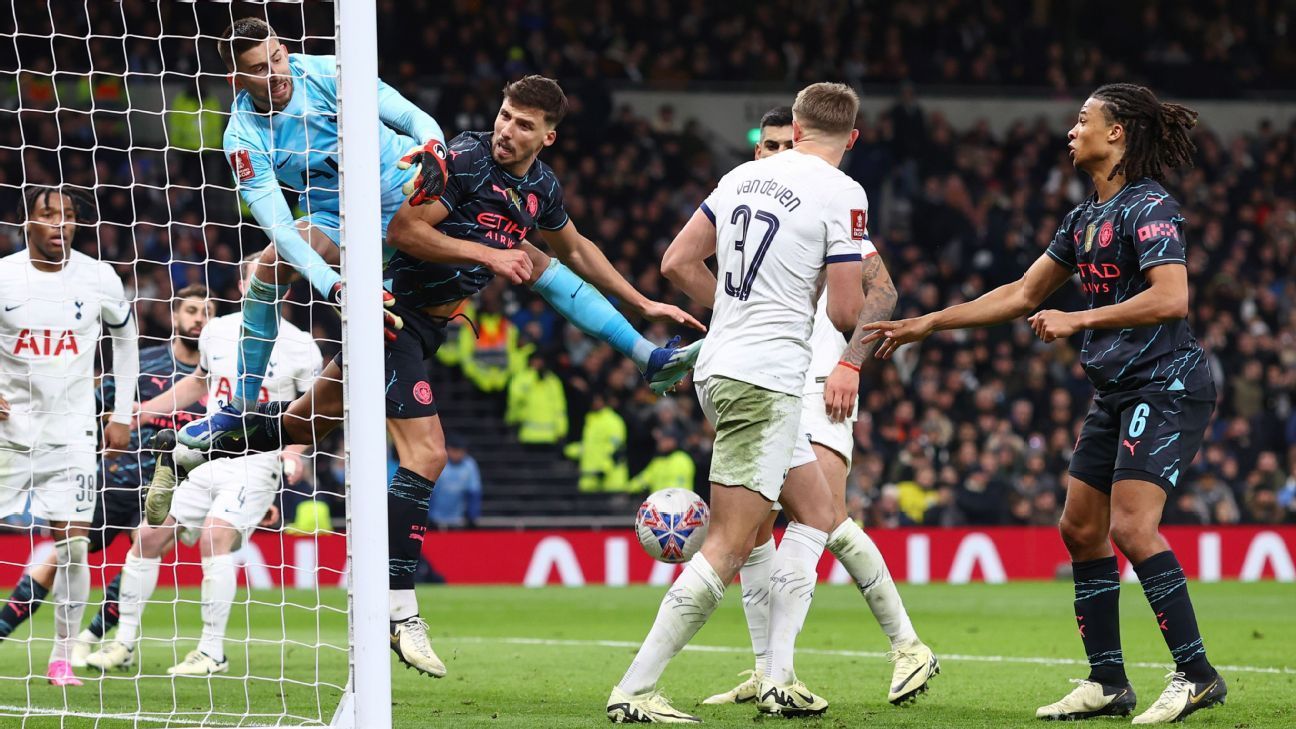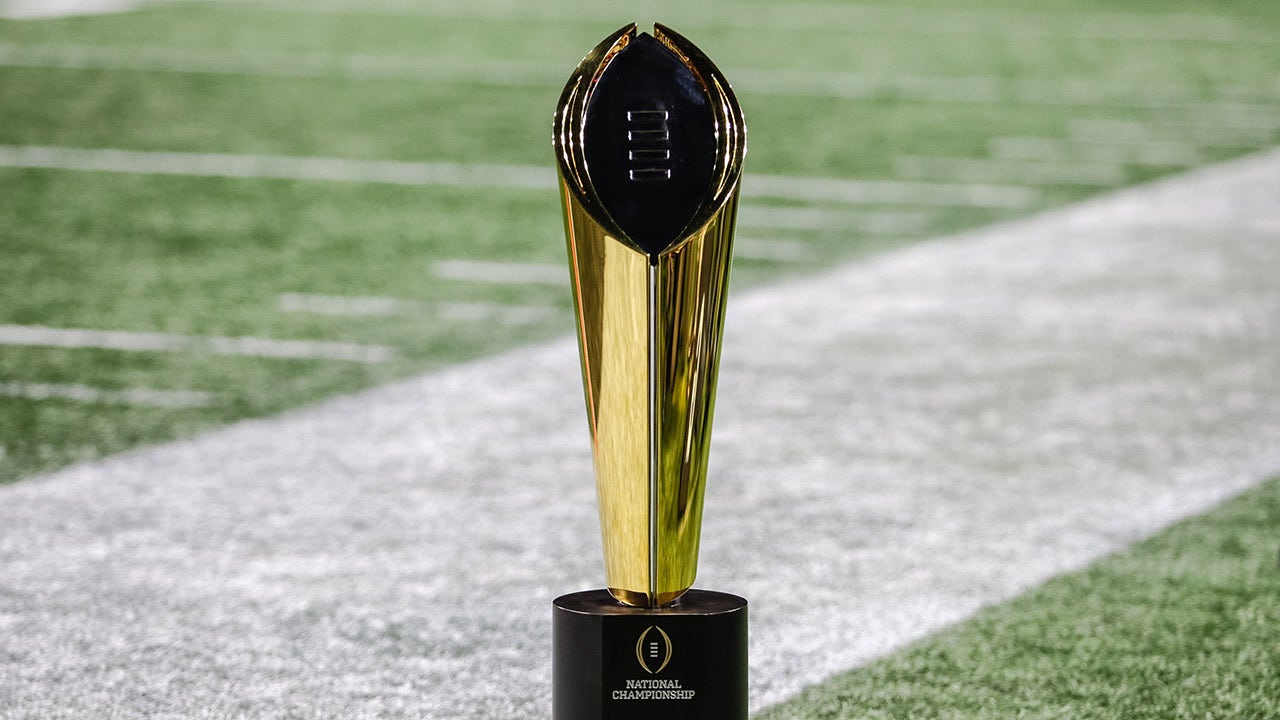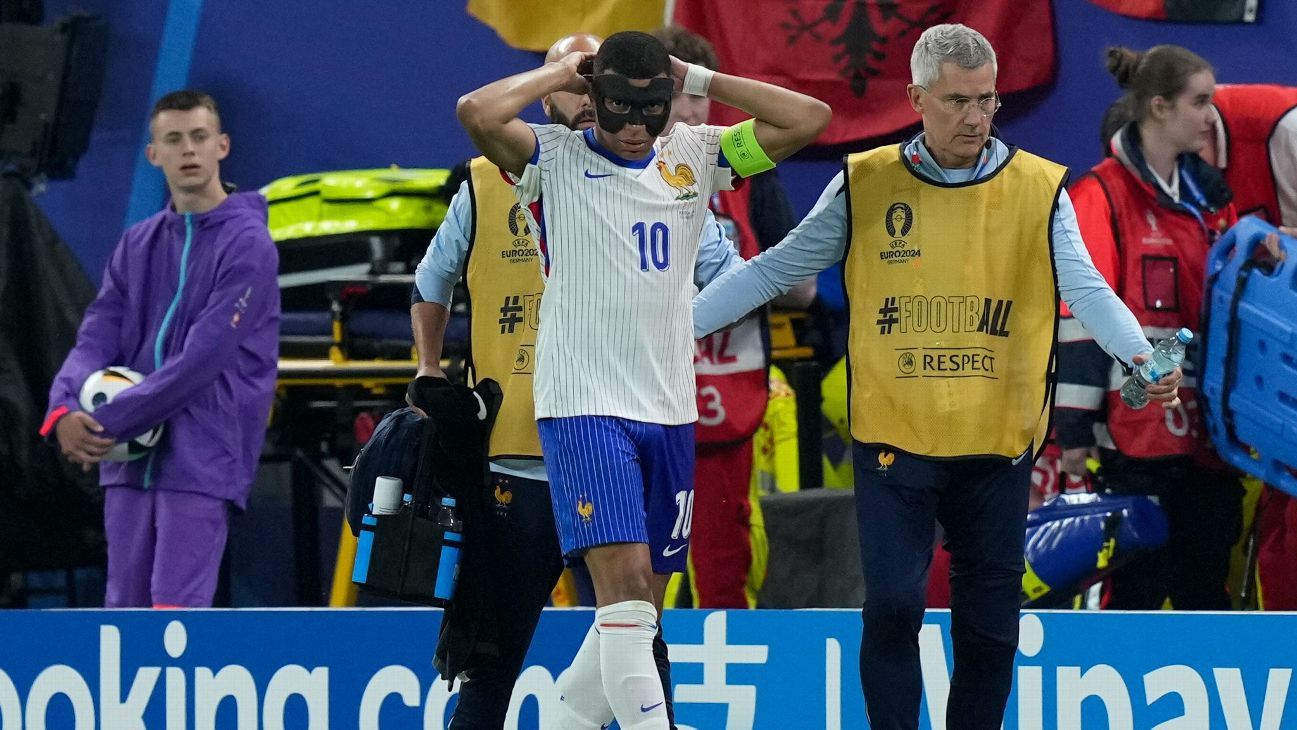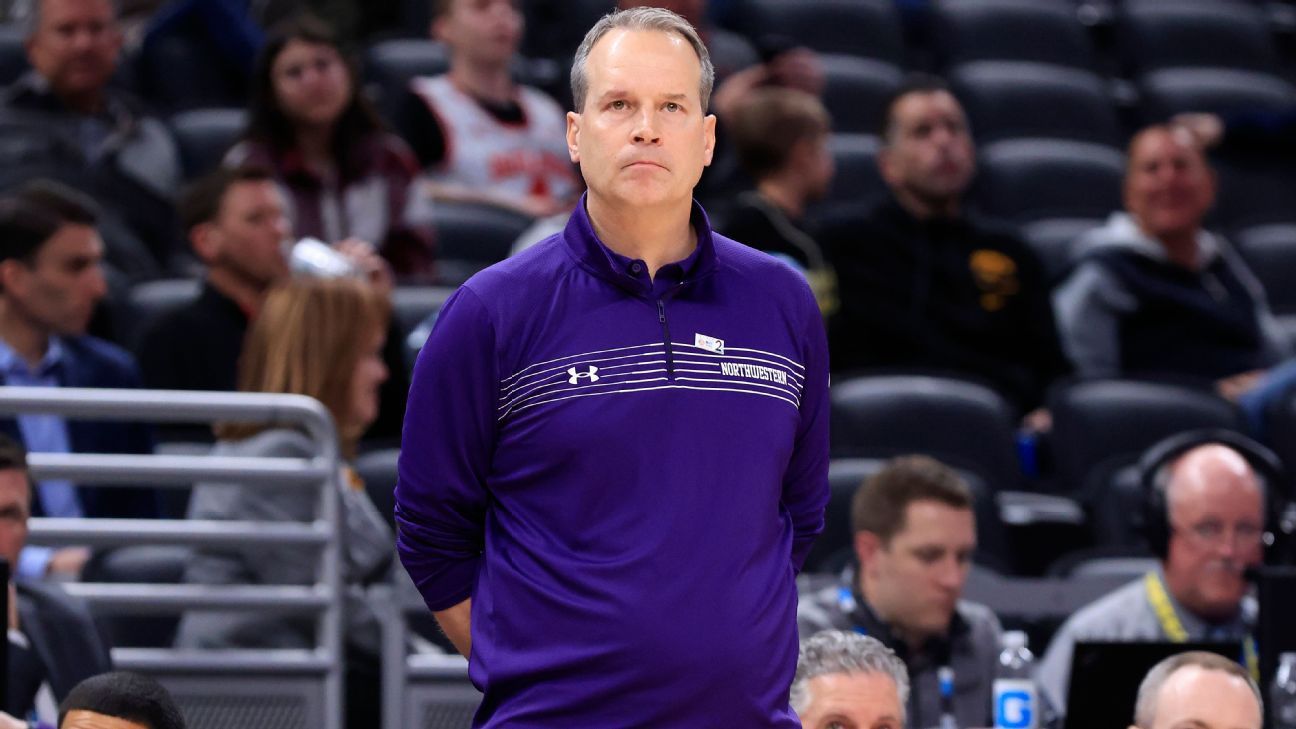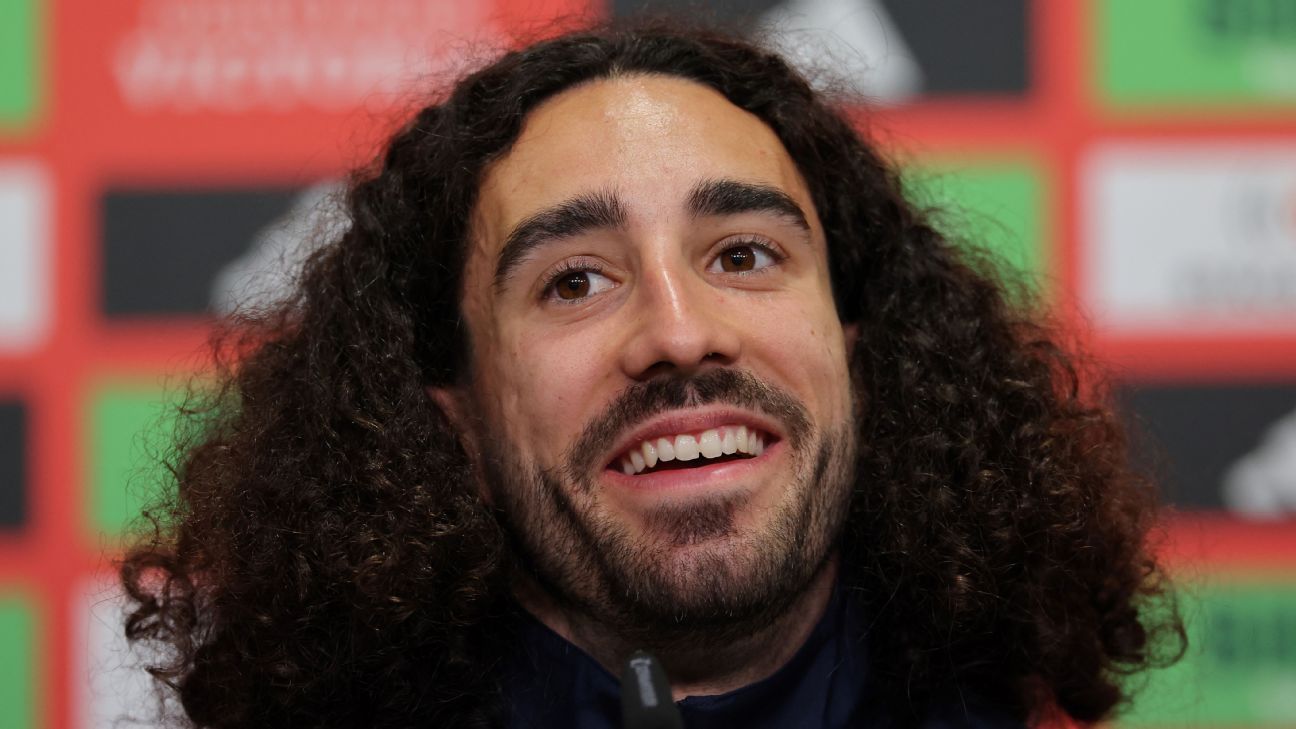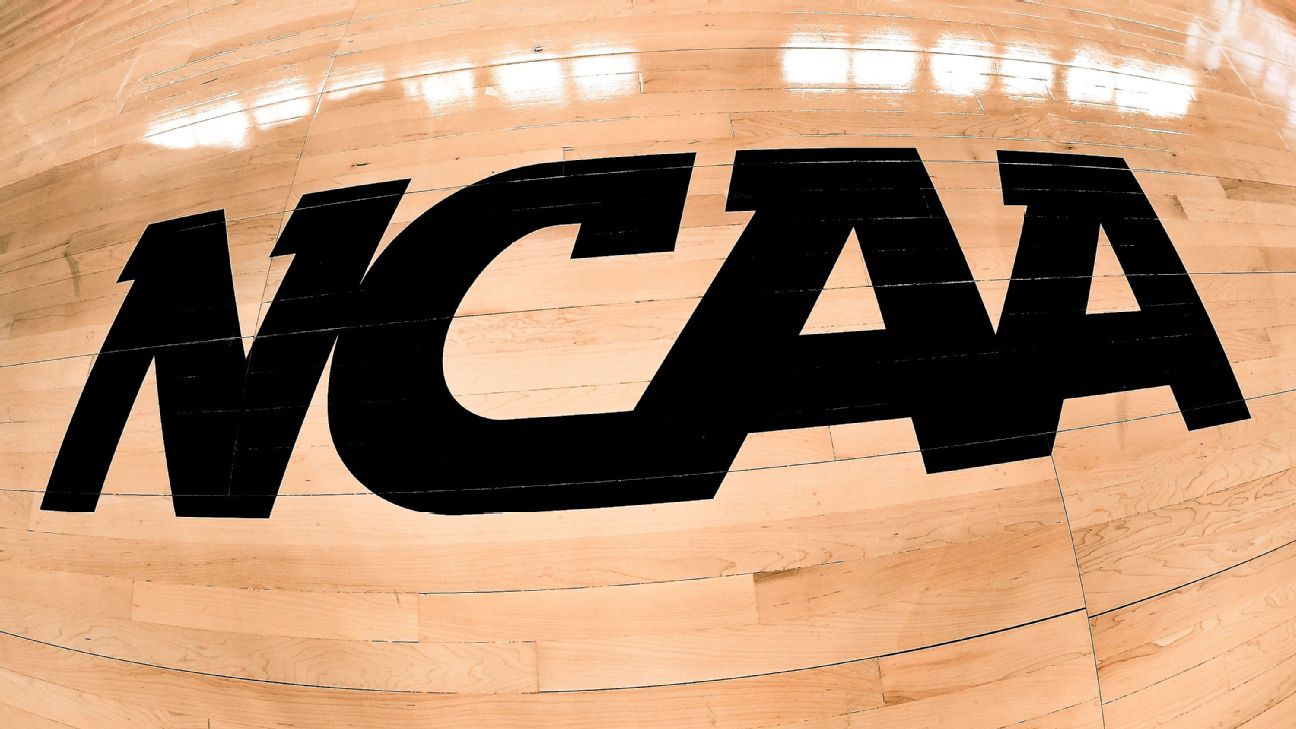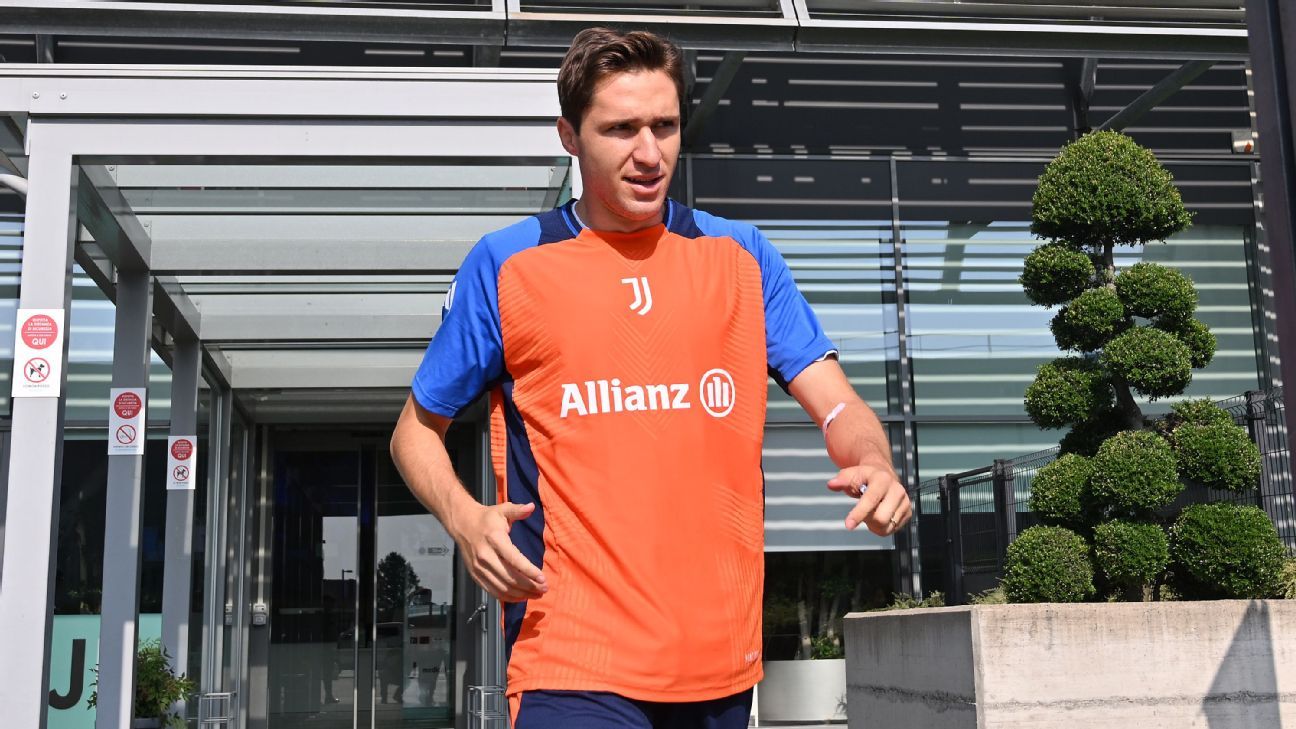The video assistant referee causes controversy every week, but how are decisions made? They are correct?
After each weekend we take a look at the main incidents to examine and explain the process both from the point of view of the VAR protocol and the Laws of the Game. This week, it's an FA Cup fourth round special.
– How VAR decisions have affected all Prem clubs in 2023-24
– VAR in the Premier League: definitive guide
In this week's VAR review: Manchester City's winning goal against Tottenham Hotspur was the subject of heated debate for a possible foul on goalkeeper Guglielmo Vicario, and should Luton Town's opening goal against Everton have counted? Also, a possible handball in the run-up to Newcastle United's first goal at Fulham.
Possible disallowed goal: Dias' challenge to Vicario
What happened: Manchester City won the game in the 88th minute when Nathan Aké forced the ball in from close range following a routine corner, but there was a VAR check for a possible foul on goalkeeper Vicario by Rúben Dias (look here.)
VAR decision: The goal is standing.
VAR review: We have seen a handful of situations recently where there has been contact between an attacking player and a goalkeeper before a goal.
On each occasion, VAR chose not to overturn the referee's decision, a result backed by the Premier League's Independent Key Match Incident Panel.
Coherence has to do with the objective of the VAR intervention, rather than the final decision.
Earlier this month, Luton Town scored a controversial injury-time equalizer at Burnley, with the home team insisting that Elijah Adebayo had fouled goalkeeper James Trafford. There was a movement from the forward towards the goalkeeper, and the Independent Panel considered a foul to be the best decision on the field, but it did not meet the threshold for a clear and obvious VAR error.
More applicable to Vicario's situation was Arsenal's second goal against Crystal Palace last weekend, when Ben White appeared to be in the path of goalkeeper Dean Henderson as he attempted to clear a corner. The panel unanimously backed the referee's decision, saying that “any contact is initiated by Henderson.”
Similarly, on Friday, both Vicario and Dias were pushing each other before Kevin De Bruyne's corner arrived. When he put in the cross, Dias was in front of the goalkeeper and stood his ground. If the City player had made an obvious block, changing his position to prevent the goalkeeper from challenging, it would have been a clearer reason for VAR to intervene.
Man City experienced a similar situation earlier this season against Liverpool, when Manuel Akanji was penalized for having an arm on Alisson before Dias scored. That goal was disallowed on the field; Again the VAR had confirmed the referee's decision before intervening.
Only one goal has been disallowed by VAR for a foul against the goalkeeper this season, when Aston Villa's Jacob Ramsey was grabbing the arm of Sheffield United goalkeeper Wes Foderingham as he tried to clear the ball.
Possible disallowed goal: Barkley's foul on Calvert-Lewin
What happened: Luton took the lead in the 39th minute when Vitalii Mykolenko deflected the ball into his own goal following a corner kick. However, Dominic Calvert-Lewin insisted Ross Barkley pushed him from behind at the near post. Were there reasons to disallow the goal?
VAR decision: The goal is standing.
VAR review: This will divide opinion, but you can understand Everton boss Sean Dyche's frustration. Many refereeing incidents have gone against his team, none more so than the VAR red card shown to Calvert-Lewin in the last round of the FA Cup, which was overturned by the Football Association on appeal.
Barkley has both hands on Calvert-Lewin's back, although replays suggest any push was insignificant. If you're Dyche and you see two hands on your player's back, affecting his ability to prevent the corner kick from passing the near post, you'll feel aggrieved. But was there really enough for the VAR to intervene?
The best comparison comes with Newcastle's winning goal against Arsenal in November, when Joelinton had both arms on defender Gabriel's back before Anthony Gordon scored. The Independent Panel ruled that VAR was right not to get involved at St James' Park, and although it doesn't sit down to evaluate FA Cup matches, it would probably come to the same conclusion.
This will be of no consolation to Dyche, who accused the VAR of re-refereeing after Calvert-Lewin had a goal disallowed at Tottenham for a foul in the build-up by André Gomes on Emerson Royal (the Independent Panel backed this intervention, too.) It's hard to argue that there's a big difference between that kind of foul and the one that wasn't penalized for Luton's opener on Saturday. Is a push from a barge really that different when it comes to assessing a foul and a VAR intervention?
For all of Dyche's complaints, Everton have no VAR errors recorded against them this season.
Possible disallowed goal: Handball before scoring
What happened: Newcastle took the lead in the 39th minute through Sean Longstaff, but were there reasons to disallow the goal for a handball in the build-up?
VAR decision: The goal is standing.
VAR review: The handball law was changed in the summer of 2021 to say that accidental attacking handball can only be penalized if it is by the scorer, to reduce the number of goals that were ruled out by VAR for seemingly inconsequential arm touches.
The ball was kicked against Bruno Guimarães's arm, but it remained stuck in his body; To be sanctioned, the Brazil international would need to have his arm extended or have made a deliberate movement towards the ball. Neither of them were present so the VAR, Tony Harrington, was right not to intervene.
In September, the ball accidentally touched the hand of Newcastle's Gordon before creating a goal against Sheffield United for Longstaff, meaning the midfielder has benefited from a “handball assist” twice this season.
Coincidentally, there was a high-profile handball incident that affected Fulham and caused huge controversy in March 2021, the day before it was announced that the handball law would be changed. The ball was kicked against Mario Lemina's arm and fell for Josh Maja to score, but VAR had to disallow what was a tying goal against Tottenham due to an accidental attacking handball by the player who assisted the goal. Lemina had his arm next to him and could do nothing to prevent the ball from hitting him.
In fact, Fulham benefited from the law change last season against Crystal Palace. The ball hit Aleksandar Mitrovic's arm before Tim Ream scored and the goal was awarded.
Aston Villa, however, were on the wrong side of the accidental attack handball law in their 0-0 draw against Chelsea on Friday. Moussa Diaby had his shot blocked in the 12th minute, the ball coming off the arm of Douglas Luiz before entering the net at Stamford Bridge; Since he was the scorer of the goal, the VAR had to annul it.
Possible penalty: Burning Hand
What happened: In the 56th minute, Kenny Tete picked up the ball inside the area and tried to cross, but the ball was fired away from Dan Burn. Were there reasons to sanction for handball?
VAR decision: No penalty.
VAR review: It is unclear whether the ball hit Burn's arm or his chest.
But the defender has his arm stuck in his body, so there was no reason for a VAR sanction.
Possible annulment of the penalty: foul by Bogle on Pedro
What happened: Brighton & Hove Albion were awarded a penalty in the 27th minute when João Pedro was brought down by Jayden Bogle. Referee Sunny Sukhvir Gill pointed to the penalty spot with the decision reviewed by VAR Darren Bond.
VAR decision: The penalty is expected, scored by Pedro.
VAR review: At first glance it seemed that Pedro had fallen very easily after Bogle's challenge.
However, the reverse angle clearly showed that the attacker had been kicked in the calf by the Sheffield United player. This decision was never going to be changed in the VAR review.
Possible penalty cancellation: Bogle handball
What happened: Brighton were awarded a second penalty in the 50th minute when Bogle challenged Evan Ferguson, with the referee ruling that the ball had hit the Sheffield United player's raised hand.
VAR decision: The penalty is expected, scored by Pedro.
VAR review: There isn't a much better example of a defender with his arm in an unnaturally extended position relative to his body. Why Bogle decided to try to contest a high ball with both arms in the air is anyone's guess, but any touch in this situation would result in a penalty.
Bogle protested his innocence and VAR checked that the ball touched the arm, but there was no evidence to suggest the on-field penalty decision was incorrect.

